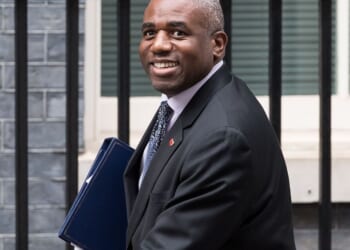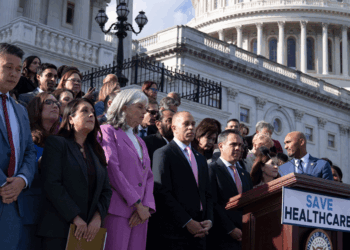There’s no doubt we have a fertility crisis.
Currently, about 16% of married women in the U.S. struggle to get pregnant or avoid miscarriages, according to the Centers for Disease Control and Prevention. Worldwide, about one in six people face infertility, according to the World Health Organization.
“In the Trump administration we want to make it easier for all couples to have babies, raise children, and start the families they’ve always dreamed about,” President Donald Trump announced Thursday.
That’s wonderful. The plummeting U.S. birth rate has concerning implications for our future economy and culture—and of course it’s heartbreaking for couples who want to have a child, for grandparents and aunts and uncles who long for little ones.
Health and Human Services Secretary Robert F. Kennedy even warned Thursday the low birth rate poses “a national security threat.”
“When my uncle was president, the fertility rate in this country was 3.5%,” he said. “Today it is 1.6%. The replacement rate—in other words the amount of fertility that you need in order to keep your population even—is 2.1%. We are below replacement right now. That is a national security threat to our country.”
But while IVF, or in-vitro fertilization, gets much of the attention for solutions for infertility, it’s not the only option. Furthermore, IVF creates real moral dilemmas, particularly about the fate of embryos created and frozen, but never implanted.
Trump announced Thursday that his administration would promote companies adding fertility insurance, akin to vision or dental insurance, as an option for employees. Currently, 27% of companies with 200 or more employees cover IVF, according to a 2024 Kaiser Family Foundation survey.
IVF is insanely expensive—a single cycle, which may well not result in a live birth, costs between $12,000 to $25,000. The president, noting that the “number 1 fertility drug used in IVF is currently 700% more expensive in the United States than the rest of the world,” announced a partnership with EMD Serono, a pharmaceutical company, that he said would reduce cost of IVF drugs.
But it’s important to recognize both the limitations of IVF and the fact that alternatives exist for couples struggling with infertility. According to Emma Waters, a policy analyst in the Center for Technology and the Human Person at The Heritage Foundation, “IVF has a success rate of merely 23 percent.”
Another approach—generally called restorative reproductive medicine—can also help couples. Restorative reproductive medicine generally examines the root causes of a couple’s infertility. For instance, if a woman has endometriosis that may be affecting her fertility. Addressing the endometriosis may then allow her to conceive.
“One study published in 2024 found that 40% of couples previously diagnosed with infertility conceived naturally after undergoing RRM[restorative reproductive medicine]-based treatments compared with a 24% success rate with IVF. Another 2018 study found that 32.1% of women who had an average of two failed IVF cycles conceived naturally following targeted medical interventions with RRM,” writes Waters.
Kennedy signaled the administration’s interest in addressing root causes during his remarks, saying, “President Trump is addressing the root causes through his MAHA agenda of reducing endocrine disruptors, the exposures, the chemicals that decrease fertility.”
In addition to being generally more affordable, restorative reproductive medicine avoids the ethical dilemmas of IVF. In IVF, it is common to freeze multiple embryos, but not implant all of them. According to Waters, generally about 15 embryos are created per cycle—and only 3 to 7% of those will be born alive. Many die or are frozen, perhaps indefinitely.
Some countries do put limits on how many embryos can be created a cycle, according to the Charlotte Lozier Institute. In Germany, for instance, parents cannot create more than three.
Currently, the U.S. has no limitations—but a poll commissioned earlier this year by The Heritage Foundation found that 44% of American voters would support limitations on the number of embryos created, while only 30% opposed doing so. Fifty-one percent of American voters strongly or somewhat support requiring all embryos created must ultimately be implanted.
Many Americans also don’t know much about the risks of IVF. Asked if they knew that researched showed women who used IVF had “a higher risk of serious pregnancy complications, including preeclampsia, gestational diabetes, severe maternal morbidity, and Caesarean section,” 49% of American voters said they weren’t aware of any of those risks.
Many Americans are also open to exploring restorative reproductive medicine. Over half of voters thought that doctors should first try to treat “the root issue which is causing the symptom of infertility” rather than IVF.
Much of the media attention in recent years to the infertility crisis has been a focus on IVF. But it’s important for Americans, especially those struggling with infertility, to be made aware of other options. We do need to reverse our baby bust—but we can do so humanely, without abandoning embryos to a long-term frozen existence or death.

















